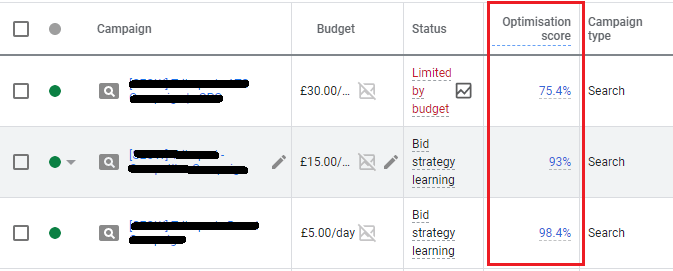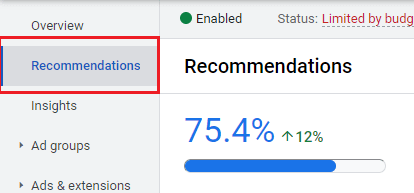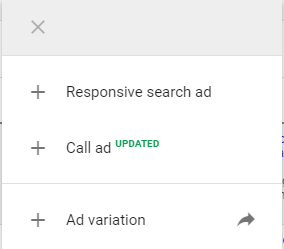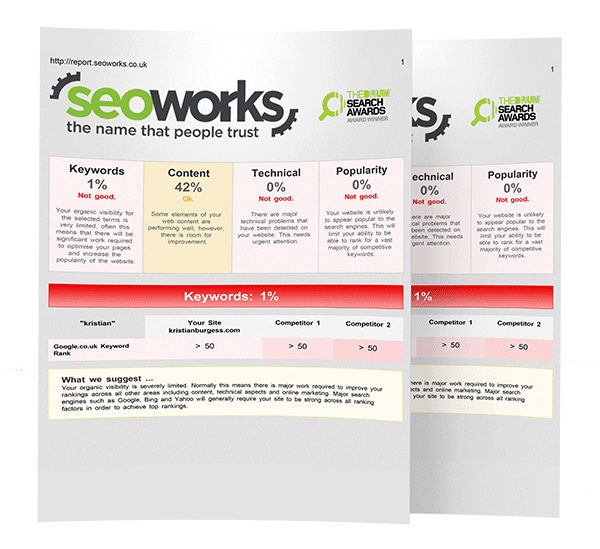Navigating the Move to Google Ads Automation
For years, savvy advertisers have controlled spend using sensible manual adjustments. Slowly, those manual adjustments are all going away! From bid management right down to ads creation, Google is slowly taking over the reins. In this blog, we take a look at how to safely navigate the move to Google Ads automation…

Have you ever thought about how Google Ads actually works?
The Google ad auction is a lightning-fast chain of events. When a search happens, Google polls their database of all active advertisers to draw up an eligible list of ads for the search query. Next, they order the ads by ‘ad rank’…
Ad rank is your maximum cost per click bid multiplied by your historical click-through rate (among other quality-related factors). Ad rank fluctuates by location, time of day, device, and even the searcher’s recent browsing history. Your ad rank for that particular search query, for that particular person doing the search dictates where your ad appears on the page. All of this happens in almost real time.
Mind blown yet? It should be!
Manual bidding.
In the early days of Google Ads, every advertiser would manually set a maximum CPC (cost per click) bid for each keyword. Google would take your maximum bid and charge you a penny more than the advertiser’s bid beneath you on the search results page.
The role of an ads manager was to review all the data points in your ad account and attempt to set appropriate bids. In Google Ads this is called ‘Manual CPC’. You can still manage ads like this but it’s rapidly disappearing as an option.
Why so? In real time, Google simply has access to many more data points than you or I…
They might know that somebody in Sheffield doing a search at 8PM on an Android device is more likely to convert than somebody doing the same search at 7PM in Rotherham on a desktop. So in real time they can adjust your bid accordingly. Using Manual CPC you can only make that adjustment days or weeks later.
Automated bidding.
Automated bidding has been available for a long time – the first beta appeared in September 2007. The early bid automation tools offered little benefit for a sharp advertiser. Between 2007 and 2017 a good ads manager would usually back themselves to outperform the automation.
Bid automation was like a toddler learning to walk. It needed a lot of attempts and fell over a lot! As recently as 2 years ago my advice was to start with manual CPC and selectively test automated bidding. ‘Proceed with caution’, was the message!
Today, automated bidding has advanced significantly as machine learning has improved…
It’s now more like a teenager than a toddler: capable of extremely good work at all hours of the day, but occasionally goes off the rails and does extremely weird things. But on the whole and with enough data, automated bidding will usually outperform manual CPC.
The thing to understand is that automated bidding is about to become mandatory. You don’t really have a choice whether or not you use it anymore, and Manual CPC is likely to disappear soon. Google doesn’t want you managing your own bids!
Google Ads is now an algorithm-based system with machine learning at the core. When you set your own bids you break the machine learning. From Google’s perspective, it’s like hiring a Ferrari and driving it around manually in first gear.
So, what do you need to do?
1. Conversion tracking.
All of Google’s automated bid strategies rely on conversion data to guide bid adjustments. If you don’t have accurate conversion figures in your account you need to fix that immediately. If you don’t have a significant volume of conversions (minimum 15 per week per campaign) you might want to track higher volume actions as a conversion.
For instance instead of measuring purchases, try measuring ‘add to cart’ clicks.
If your conversion volume is still low, check your click conversion window (the look back period over which Google will credit a keyword with a conversion). The default window is 30 days, but you can extend this up to 90. Broadly the conversion window should match your sales cycle.
Google claims the automation works with no conversions, however we are deeply sceptical of this. (Remember, it’s a teenager. It needs data points to guide it!)
The more conversion data you have, the better. Each conversion teaches the Google algorithm what a ‘converter’ typically looks like so they can optimise bids in real-time based on those signals.
2. Bid strategy.
For eCommerce stores it’s generally best to use ROAS bidding (where you give Google a target return on ad spend to aim for). If you operate in a niche market with a low number of daily searches I’d go with ‘maximise conversion value’ instead. ROAS bidding may throttle your impressions too much.
For lead generation advertisers it’s generally best to use CPA bidding, where you give Google a target cost per conversion to aim for. (CPA stands for Cost Per Acquisition). Again if search volume is low try ‘maximise conversions’ instead. With enough data points Google is very good at hitting a ROAS or CPA target. Be mindful that if you set the target too aggressively you will throttle your number of conversions and reduce your overall profit.
You should be aiming to maximise profit, not maximise ROAS or minimise CPA. For brand campaigns you might need to use ‘target impression share’ to maximise your exposure in top positions. This is really a brand defence tactic to prevent competitors ‘stealing’ your traffic.
Challenges.
For automated bidding to work each campaign usually needs to have it’s own daily budget. You can apply a shared budget, but if you have one shared budget spread across 20 campaigns you’ll find that some campaigns don’t get enough spend for the algorithm to optimise.
You’ll need to consolidate your campaign structure first so your data accrues in fewer ad groups. The drive towards automated bidding has changed the way we plan and build campaigns. Because Google needs a volume of conversions to optimise bids, it no longer makes sense to build a granular campaign structure based around single keyword ad groups.
You’ll usually see better results from a simpler campaign structure with data consolidated across fewer campaigns and ad groups
The Role Of Your Agency.
Let’s say you work with an agency to manage your ads. What should your agency be doing now that they aren’t micro-managing keyword bids all day? In our opinion, the role of your agency should be strategic. Google is good at bid management, but they have no intention of trying to understand your business or your business goals.
A good agency should understand what you are trying to do and configure your account in the most appropriate way. Google is good at anything computational, but poor at anything linguistic. They’ve tried to automate ad creation, but so far have mostly failed. You understand your products and audience better than Google does.
Your agency should help you create compelling ads using the correct ad formats. Your agency should help make sure there is synergy between the ad and the landing page to give your campaigns the best chance of converting.

Is Google trying to take over your ad account?
Hint… they might be… Especially if you’re not paying much attention!
As we covered in Part 1, Google Ads is now an algorithm-driven ad delivery platform powered by artificial intelligence. The rise of the machines isn’t coming – it’s here! Google wants to take over all technical ad serving decisions in your ad account.
From Google’s perspective, your role as the advertiser is to configure your conversion tracking, set appropriate campaign objectives and provide ad creative for Google’s artificial intelligence to use.
Google then wants to take over control of everything else:
- All media network choices
- All ad creative combinations (i.e. the combination of image / video / headline / description).
- All bidding decisions
‘Smart’ campaigns.
If you’re using a ‘smart’ campaign (smart shopping, smart display, discovery) you’ve already experienced this. All of these campaign types provide very few options for manual optimisation. We used to joke that ‘smart campaigns’ were in fact the ‘unsmart’ thing to do. Today this isn’t always true – especially if your campaign generates at least 30 – 50 conversions per week.
Each conversion acts as a data point to guide the algorithm towards smarter decision making. Unfortunately, many advertisers do not have the conversion volume needed to quickly guide the smart bidding algorithm. Google will happily drain your budget while they figure out how best to spend your money!
Remember, Google will do what is right for Google. You must do what is right for you. At low conversion volume there is a conflict of interest between you and Google. You aren’t here to fund the Google Christmas party!
So, what other changes should you be aware of?
Optimisation Score.
Each campaign in your account now has an ‘Optimisation Score’ percentage. Google’s support documentation describes this as: “100% means that your account can perform at its full potential”.

reports. Clicking the number will take you to your score
breakdown and recommendations.
“Full potential” is a highly ambiguous term. From your perspective it should mean ‘high return on ad spend’. A sceptical reader might however interpret it as ‘high revenue for Google’.
(Note: A high Optimisation Score does not necessarily correlate to high spend. But it sure is easier to blow tremendous amounts of money by blindly applying Google’s recommendations!)
Optimisation Score is tied to a list of campaign recommendations…
Recommendations.
Campaign recommendations can be found by clicking on the score itself or on ‘recommendations’ from inside a campaign…

Tellingly, the largest improvements in Optimisation Score relate to budget and bid strategy. In the screenshot above we’re being ‘marked down’ because clicks in that market are expensive and the client only has a small testing budget. To Google’s disapproval, the client doesn’t have unlimited money to spend!
Other more useful recommendations can relate to ads, ad extensions and audiences. These recommendations can be a useful check to make sure you are making appropriate use of relevant advertising tools. It’s worth noting that you can dismiss a recommendation, but doing so won’t improve your score.
Top priority.
In reality it’s perfectly possible to run a profitable campaign on a small budget with a low Optimisation Score. Optimisation Score has no relation to quality score or ad rank, and does not impact ad delivery. It’s more an indicator of how well you have prepared your campaigns for automation.
Optimisation Score is a top priority for Google, perhaps because it drives significant revenue. Consequently Google are pressuring agencies to increase Optimisation Score across all client accounts.
Optimisation Score now factors into our performance targets as an agency. You should be aware of this. It isn’t a secret and your agency should be up front about it…
The agency perspective.
From our perspective as an agency we’re always trying to mediate between Google’s interests (high Optimisation Score) and your interests (high profitability). We’ve had to review recommendations across all our accounts this year and apply recommendations selectively in a way that maintains or enhances your campaign profitability.
An undiscerning agency will blindly apply recommendations as the easiest and fastest thing to do. A discerning agency will understand your business objectives and apply recommendations only when it is relevant to do so. We do have remit to push back on Google when recommendations are inappropriate to the client’s strategy.
Still, reviewing your campaign’s Optimisation Score and recommendations has become a part of the monthly management process. If you’re managing your own ads we recommend regularly reviewing Google’s recommendations on a monthly basis, even if you choose not to apply them.
Auto Applied Ad Suggestions.
If you leave your account to run unchecked Google will start writing ads for you. These are called ‘ad suggestions’, and are auto-applied after 14 days unless you tell Google not to. It is extremely rare that an auto-applied ad extension will outperform an ad you’ve created yourself.
You understand your audience, your marketplace and the questions customers usually have. Google has no knowledge of this. Google may be better at bid management than you, but you are better at ad creation than Google is.
We’re not completely against ad suggestions. By all means test them. But don’t leave your account unattended only to find Google have been autoapplying ads you would never write yourself.
Regular Text Ads are Disappearing.
In a search campaign when you create a new ad you now only see the option to create a ‘Responsive search ad’ or a ‘Call ad’. Call ads only appear on mobile devices and have a relatively limited use case (I can’t remember the last time I created one). So the only real option now is responsive search ads.

(Note: regular text ads ARE still there, and none of your ads will have disappeared. You CAN still create regular text ads using Google’s offline editor tool. But the option to create new text ads will be going away soon.)
Responsive search ads.
In a responsive search ad you enter up to 15 ad headlines and 4 ad descriptions. Google will then attempt to show the most effective combination of assets to each person, both overall and individually. If Google has you pegged as a ‘deal hunter’, you’ll more than likely see ad copy relating to price or current deals.
We’ve recently seen Google prioritise responsive ads over existing text ads. This doesn’t always hold true; Google will show whatever ad makes them the most money! But it’s true as an overall trend. All other things being equal, they’ll use the responsive ad format.
Until recently best practice has been to create at least three text ads and one responsive search ad. We’re now creating two or three responsive search ads per ad group, and making sure that responsive ads use high performing wording from previous text ads. You can also pull in high performing copy from Facebook and other media.
Reduction in Search Query Data.
For many years smart advertisers have kept a close eye on search query reports and maintained long lists of negative keywords. The search query report shows you the actual terms people entered into Google before clicking on your ad.
This data is now being restricted to only the most ‘significant phrases’. Google cites ‘privacy’ as the reason behind this change, which makes us think the search query data could be altogether removed. How soon might this happen? Maybe sooner than you think. Google already does not show you search query data for smart shopping campaigns.
Fundamentally Google doesn’t want you to review search query data and add negative keywords. In Google’s view of the world there is no such thing as a ‘bad search query’, only an inappropriate bid. Which is of course nonsense! For many search queries the correct bid is a big fat zero. But that isn’t how Google sees it.
Our advice? Keep reviewing search query reports while you can! Add as many relevant negative keywords as you can.
The Broadening of ALL Keyword Match Types.
For years we had three keyword match types: broad, phrase and exact. We’ve also had something called ‘modified broad’, which can best be described as ‘like phrase match except the word order doesn’t matter’. The default keyword match type has always been broad, which is the way Google wants you to use keywords.
With broad match you are simply guiding the algorithm rather than specifying the exact terms you want ads to run against. For years smart advertisers have limited Google’s remit by extensively using phrase and exact match keywords.
On phrase match Google will only show your ad if the search query includes the phrase in the exact word order. On exact your ad will run if the search query entered into Google exactly matches the keyword.
For a while now, exact match hasn’t actually been very exact. Google includes misspellings and ‘minor word variations’, which sometimes aren’t very minor at all! Exact match has increasingly behaved more like… broad match!
Since February 2021 phrase match has no longer been phrase match. The ordering of the words no longer matters (meaning phrase match works in the way that modified broad used to).
“Bears chicago” could now also match the phrase ‘Chicago Bears fixtures’. So phrase match now also behaves more like… broad match!
See the pattern here? Everything is slowly becoming broad match! These changes make it critical to review search query data and apply relevant negative keywords, which is an issue when the search query reports are showing limited data.
Conclusions.
You don’t need to be afraid of Google’s automated account options. But you do need to understand what is going on and make the right decisions for your particular circumstances.
That’s what a good agency should help you to do.
Overall you DO want to adopt the automated tools, especially in regards to bidding. In doing so you may need to rebuild your campaigns into a less granular structure.
You want to consolidate your data into as few campaigns and ad groups as possible, because this gives the automation more data points to work with in a single place. This has been a significant change in how we plan and build campaigns.
Need a second opinion on your current ads strategy?
Get in touch with our award-winning team of PPC experts.

Rob is an expert in Google Ads, copywriting, and marketing automation. He’s also an author of three books on marketing and a part-time podcaster.

